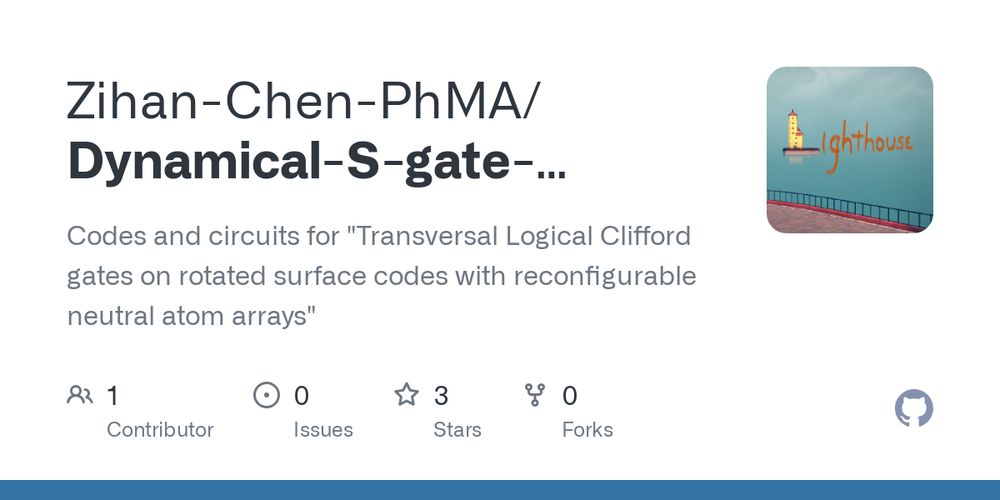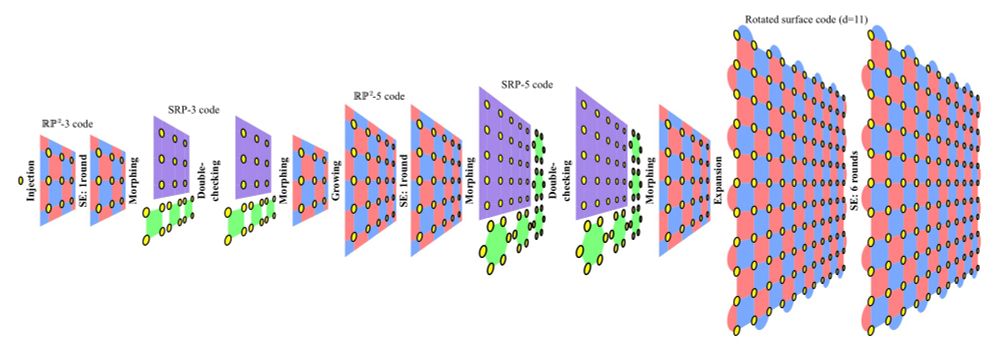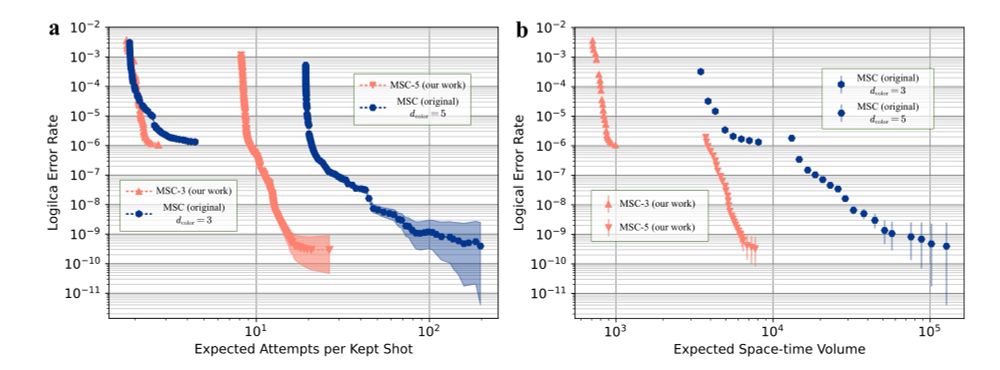T cultivation repo: github.com/Zihan-Chen-P...

T cultivation repo: github.com/Zihan-Chen-P...
Well, the above is pretty much the whole story. One then simply needs to get the details right. (See our paper for them.)
Well, the above is pretty much the whole story. One then simply needs to get the details right. (See our paper for them.)
We use the small RP^2 code to hold information and transform it to SRP code (a self-dual code) to double-check the logical state and then back. After preparing a high fidelity T state on the RP^2 code, we grow it to a large rotated surface code.

We use the small RP^2 code to hold information and transform it to SRP code (a self-dual code) to double-check the logical state and then back. After preparing a high fidelity T state on the RP^2 code, we grow it to a large rotated surface code.
1. To easily grow to a large regular surface code, the small code should be structurally similar to the surface code.
1. To easily grow to a large regular surface code, the small code should be structurally similar to the surface code.
Inspired by the original MSC protocol, we propose a new MSC protocol that produces T states on the regular surface code. Our protocol requires nearly an order of magnitude smaller spacetime cost to prepare a T state with logical error rate 1e-9 compared to the original MSC

Inspired by the original MSC protocol, we propose a new MSC protocol that produces T states on the regular surface code. Our protocol requires nearly an order of magnitude smaller spacetime cost to prepare a T state with logical error rate 1e-9 compared to the original MSC
1. Preparing a high fidelity T state on a small (color) code. Crucially, the transversal logical H_XY operator of the color code is double-checked to verify the correctness of the logical state.
2. Growing the small code to a large code to protect the logical state.
1. Preparing a high fidelity T state on a small (color) code. Crucially, the transversal logical H_XY operator of the color code is double-checked to verify the correctness of the logical state.
2. Growing the small code to a large code to protect the logical state.
Magic state cultivation (MSC), proposed by Gidney et al., can, very surprisingly, produce T states (with logical error rate down to 1e-9) as efficiently as lattice surgery CNOT.
Magic state cultivation (MSC), proposed by Gidney et al., can, very surprisingly, produce T states (with logical error rate down to 1e-9) as efficiently as lattice surgery CNOT.

